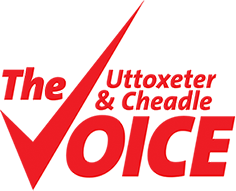Down on the Farm
by Angela Sargent
February 3rd 2021, Issue 103
“The trees are coming into leaf
Like something being said,
The recent buds relax and spread,
Their greenness is a kind of grief”
Philip Larkin
March “comes in like a lion and goes out like a lamb” - hopefully foretelling settled and warm weather for spring. The days are certainly longer (especially with the clocks going forward) and, somehow, there seems just more time to do things.
Which is just as well as there’s a lot more to do.
Turnout time is here for our cows, especially if the weather is benevolent, but they have to pass the Btb test first.
After the continual feeding/bedding routine, whilst they’re inside, It’s a joy to watch them kicking their heels up( the old ones too!) as they rush out to pastures they know so well and in a couple of months the main calving period begins.
Our ewes are being fed in preparation for lambing, as the unborn lambs are growing most quickly now- so that’s a tricky job, trying not to get bowled over in the rush.
The longer daylight hours kickstart the new grass growth and as it grows quickly, it is sequestrating Carbon. Fertiliser will be applied soon to make sure it has enough nutrients to help it grow, although our old ridge and furrow won’t get any as it is in a conservation scheme which forbids any improvement .
Any field work we have got to do needs doing as soon as we can now and a check round of crops already sown is in order.
I’ll be checking all our lambing equipment soon and restocking on items like iodine/surgical spirit for navel dips, adequate stocks of dried colostrum and milk powder and making sure the less routine equipment is still ok.
Dairy cattle will also be going out and making more and more milk as the nutrition in the grass improves. This spring flush does cause price to drop as there is plenty of milk available and there is a new dairy code of conduct being put into legislation, to set minimum standards of business practise- milk buyers have previously been able to change terms and introduce price cuts without negotiation.
You might see secretive Bullfinches, with their exquisite deep red breast, sitting singing in shrubs or fruit trees and brimstone butterflies with their sulphur yellow wings around the alder trees, after over wintering in ivy. The alder trees themselves will be flowering before the leaves appear.
March, a magnificent abundant month!
December 7th 2020, Issue 102
“They gave him of the corn land, that was of public right,
As much as two strong oxen could plough from morn till night.”
Chaucer
Under lockdown, along with everyone else, we are so lucky to live where we do! The beautiful English countryside, particularly here in Derbyshire, has never been so appreciated.
Whilst we welcome anyone exercising or just enjoying a ramble on our many footpaths, it is important that notice is taken of the countryside code- gates left as they are found, litter taken home, care taken when near livestock and not allowing dogs to roam too freely (disturbs and displaces wildlife) and please be aware you are walking through someone’s home and workplace.
December is a mixed month - short days, dark nights and cold, bleak, dreary weather and we are bringing in our remaining cattle, to pass the next few months indoors. Dairy cattle will be in already and cattle are quite happy to be dry, warm and well fed and watered. Just like us, they won’t move far if everything is to hand.
We let ours out into the yards whilst we scrape out and bed and some will jump and skip about, happy to stretch their legs, others have to be pushed out and lurk by the gate, ready to come in at any opportunity. We also take the chance to check water troughs and electrics when they’re out of the way.
It’s a fallacy often promoted by single agenda groups, that farmers do not care about the welfare of their animals. Of course there are those who don’t (as in society as a whole) but mostly, our livestock is treated fairly and sensitively and the UK ranks as one of the only four countries world wide reaching the highest grade for commitments to animal welfare. There is also a strong legal framework alongside assurance initiatives.
We have put the rams in with the ewe flock and they have been on fresh pasture to make sure they’ve had enough nutrition for their pregnancies.
Last years lambs have been sold in batches through the livestock market, but we still have quite a number left.
The question is do we sell all as quickly as possible, because, with Brexit (and at the time of writing no trade deal with the EU, our largest customer, has been done and there is no ‘third country’ legislation in place either for imports/exports), or do we keep them and assume everything will be sorted?
Luckily over a million people lobbied to make sure there was a trade and standards commission in place to scrutinise deals on the agriculture sectors behalf, showing consumers do care how their food is produced.
Our fields are full of wheeling crows and pigeons and field fares chatter as they swoop and settle then lift and swirl around to land again further along. The plaintive cry of a young buzzard as he flaps clumsily after his parents echoes eerily and sparrows argue as they feast on hedgerow fare of hips, haws and left over sloes.
Have a good Christmas, whatever.
April 6th 2020
Now we’re into spring it would be nice to feel the warmth of the sun and see blue sky more often than we have over the last few months.
The results of the wet Autumn mean farmers will be trying to get more Spring crops in to make up the shortfall.
But, to get the best results, the soil needs to be drier and crumbly, not wet and sticky. Unfortunately for us, having red clay, we’re not likely to be able so we’ve opted for a grass break- using grass as a crop. This means though that come next winter we will have no home grown straw/ corn and will have to buy in.
We start lambing this month, having been feeding the ewes since February ( the lambs inside grow most in the last part of pregnancy). They will graze outside during the day and be brought in at night( more for ease of checking).
How do we know when a ewe is starting to lamb? We have brought them closer to the farm for a week or so now and have got into the habit of checking every hour so we recognise their normal habits, such as what part of the field they graze at what time, when they rest etc. If a ewe starts to do something unusual, like go off on her own or stand looking uncomfortable, then we know she is likely to lamb that day. As the birth becomes imminent she will keep lying down then getting up and sniffing the ground until she lies down and starts to undergo contractions.
We will be keeping an eye on proceedings from a distance so as not to upset her, but close enough we can dash in to help if needed. If she doesn’t progress we will bring her inside( with all of them if she won’t come on her own) and catch her and investigate.
I will be getting all my bits and pieces together now- lambing rope, iodine/surgical spirit mix for umbilical cord dipping, gloves, lubricant, marker, castration bands and applicator, feeding tube, dried colostrum, lamb milk powder ( and this is roughly the items we use for calving( but bigger and stronger obvs!) as we have calves due now too.
Please remember to keep dogs on leads when walking through fields of lambs- there have been horrific cases of dog attacks on sheep and lambs- please don’t let yours be one of those statistics. And the same applies to fields with calves in- but if you feel threatened, let your dog loose as it can outrun a cow as it is usually the dog she is worried about.
The ground nesting birds( along with all the others) will be courting ready to breed and we have a few partridge about( growing a crop for their food/ habitat especially). They make difficult parents, especially the indigenous grey partridge, laying many eggs which are often predated.
It is often said that livestock and dairy farming is bad for the environment- well this is incorrect, certainly in Great Britain. Livestock manure helps soil health and fertility, without which inorganic fertiliser would have to be imported in greater quantities. There are strict rules and regulations here as to how much, how and when manure/slurry is applied to the land.
Also grazing animals help habitat formation in SSSIs, critical to the lifecycles of other mammals, insects and birds and it is estimated that the value of the contribution to biodiversity in England might be as much as £1.2bn.

